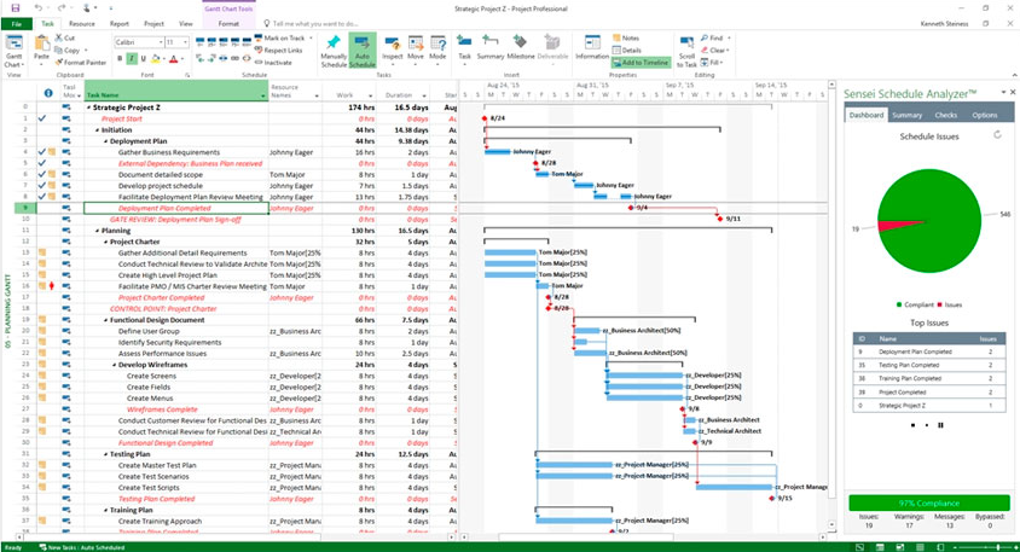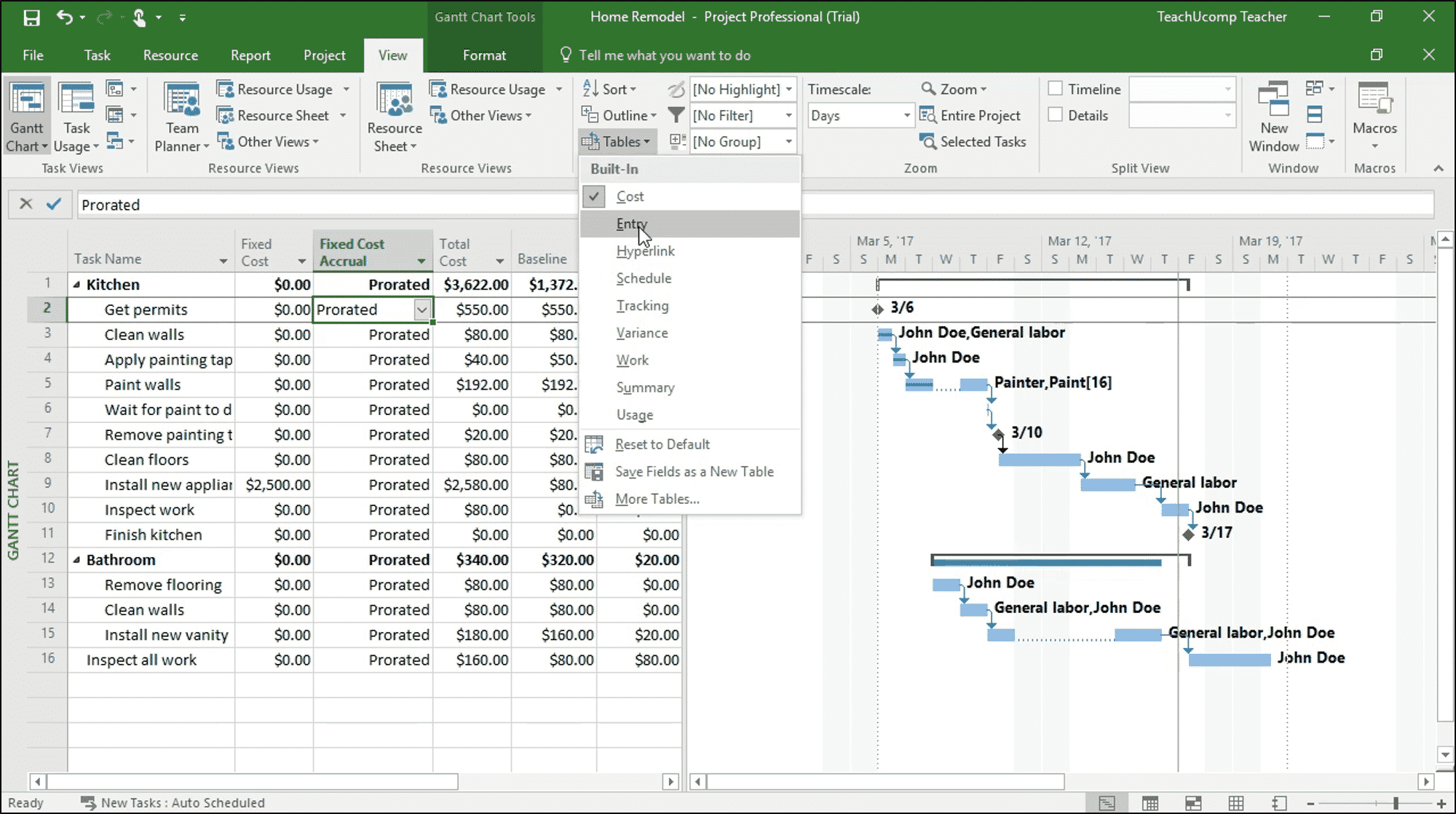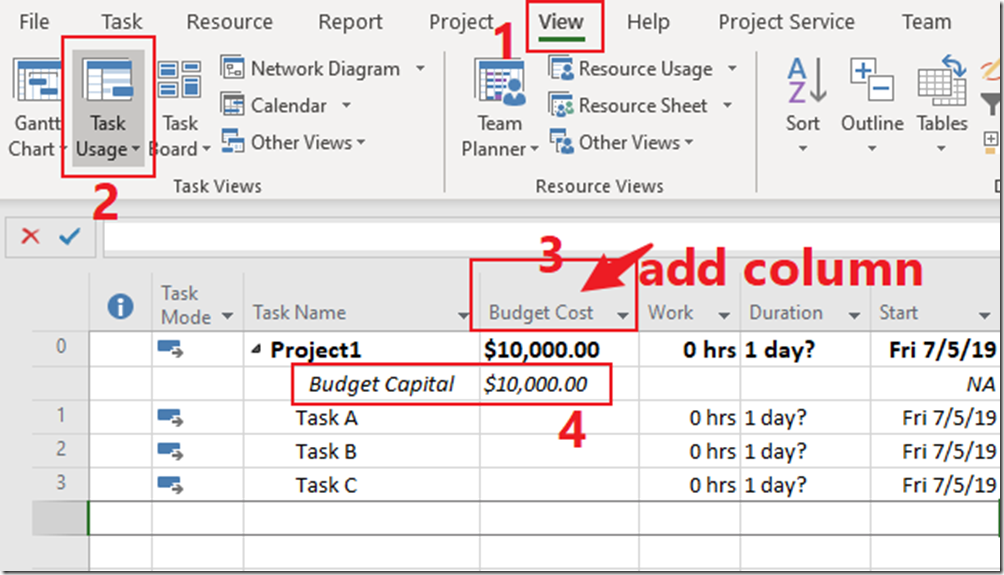

- Microsoft project professional 2013 print table how to#
- Microsoft project professional 2013 print table series#
In MS-Project 2016, select View, Tables, More Tables, select the table you use most (if you are not aware that table views exist, you will probably have been working in the default “Entry” table), and click on Copy. To do this, first create a copy of an existing the table you use most. Now you need to create a custom table that displays fairly minimal information alongside the Gantt chart. Figure 2: Custom filter dialogue box The Table Call it something like “Exec view” and set up the dialogue box so that it shows only tasks for which the custom flag “Exec view?” is Yes (see figure ), then click on Save. To do this in MS-Project 2016, select View, and in the Data group in the drop-down that appears next to the “ Filter” item, select New Filter right near the bottom.

You need to add this to a Gantt table to select which tasks will appear in the Exec view, and create a new filter that uses it. Figure 1: Custom Exec view flag dialogue box To do this, pick an empty custom task flag field (in MS-Project 2016, select Project, Custom Fields, and look for a custom flag field with an uncustomised name, like “Flag1”), rename it something like “Exec view?” and click on Formula (see figure 1). So instead I usually use a customised flag field (with a default of “no”) so that I can specifically select which items appear in a summarised Exec view. In my experience this rarely works smoothly, as different people often have different ideas what is a “level 0” milestone, and you often get the situation where an item is level 3 as far as the project is concerned but we want to include it in the Exec view because one of the Execs has a particular interest in it.

You can do this by setting up a numerical field called something like “Milestone level” (with level 0 being the most important, level 1 the next most important and so on), and setting a filter to determine which level milestones appear in which types of report. This is how you specify which tasks are going to appear in the Exec view. You can build a custom “Exec” view comprising a minimal table, a filter (to focus attention on only the most important items), and some Gantt chart formatting. The answer lies with custom Gantt chart views.

You need to generate a view for the programme team that contains all the detail and information needed to manage delivery. So you’ve created a useful programme schedule, and you want to create tailored views to suit stakeholder audiences. So why would you want to use this approach, how do you do it, and what ’s in it for you as a result? The Why
Microsoft project professional 2013 print table how to#
This post describes how to set up custom Gantt chart views to present schedule extracts based on the Live project schedule data, filtered and formatted to suit particular stakeholder audiences.
Microsoft project professional 2013 print table series#
Part of a series on customising Microsoft® Project® to make working with project schedules more useful.


 0 kommentar(er)
0 kommentar(er)
